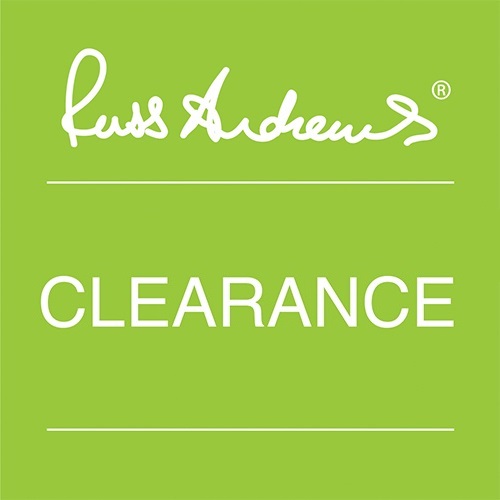1964-6 Russ builds his first Hi-Fi system
After leaving school, Russ gradually built his own system using a valve amplifier kit and speaker kit. At the time he was working for GEC telecommunications as a Test Engineer involved in electronics and radio servicing. The pay was good, and he became proficient at fault finding and repair - so much so, that he was soon completing his day's allotment of work within a couple of hours. He recalls that such efficiency didn't go down very well with co-workers in this heavily trade-unionised environment!
A change in direction
Russ is not a man who likes to be bored, so it was only a matter of time before he sought pastures new. The move, when it came, was a somewhat unexpected change in direction: he relocated to Edinburgh to become a mature student of Chiropody. To support himself, he took a part-time job repairing Hi-Fi equipment and radios at Hi-Fi shop Audio Aids. His new found interest in people's feet, however, proved no competition for his Hi-Fi passion when the following year he was offered a partnership in Audio Aids. He jumped at the opportunity!
It was whilst working at Audio Aids that Russ realised how much better equipment sounded when played in a room on its own, and he went on to build a dedicated dem room in the shop. This concept of a 'dem room' to listen to equipment before making your purchase gradually spread and has now become accepted practice within the industry.
The Audio Aids recording studio, fitted with a couple of Revoxs and an Allen and Heath, gave Russ his first experiences in recording. In addition to recording local groups they hired out recording equipment for various concerts during the Edinburgh festival. One particularly memorable occasion was when they provided the music system for a bizarre performance art piece by German conceptual artist Joseph Beuys (widely regarded as one of the most influential artists of the second half of the 20th century).
In late 1971, Russ took the opportunity to buy Hi-Fi Corner in partnership with Graham Tyso. As if he wasn't busy enough, he also taught a course at Telford college about how Hi-Fi equipment worked and how to build your own. It was around this time that he put together what was regarded as the system of the day - a Thorens TD124 turntable, Quad 33 and 303 amps and Spendor BC1 loudspeakers - only to discover that it failed to deliver truly musical sound. It was this experience that prompted Russ to embark on his quest to discover how to achieve truly enjoyable music from a Hi-Fi system.
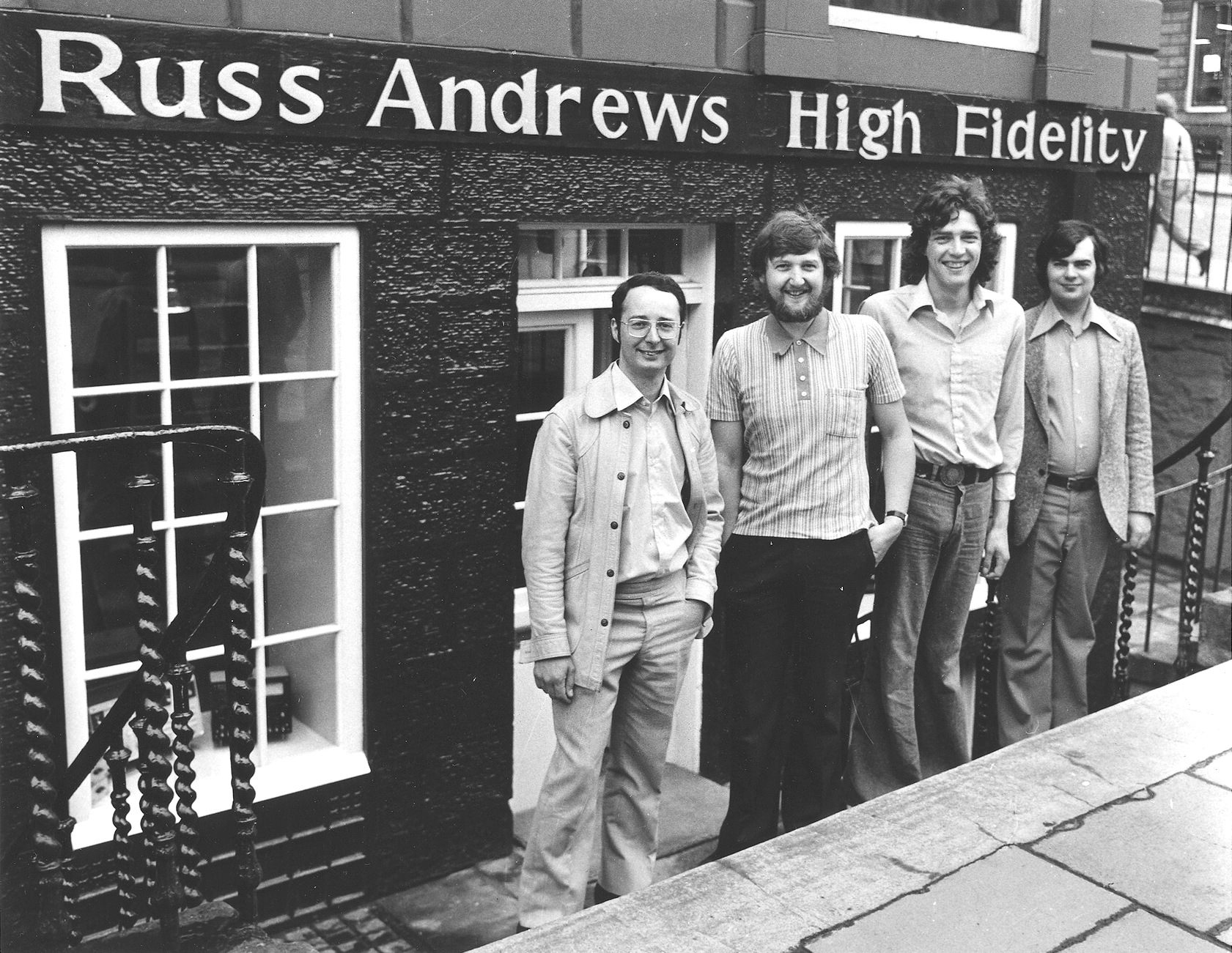
Outside Northumberland Street shop, 1976.
Left to right: Russ, Dave Watson, Jerry Ubysz, Roy McCullough
The LINN link
A visit from Ivor Tiefenbrun (founder and MD of Linn Products) introduced Russ to the Linn Sondek LP12 turntable, a product that he quickly recognised as having superior musical merit. Their friendship developed, and it was through Ivor that Russ met and befriended Julian Vereker (founder of Naim Audio). At that point Julian was selling his incredibly expensive NAP160 and 200 amplifiers solely into the pro-audio industry. Russ thought they were so much better than anything else that he'd heard that he began selling them (the first retailer to do so), advertising them and recommending them to everyone he knew!
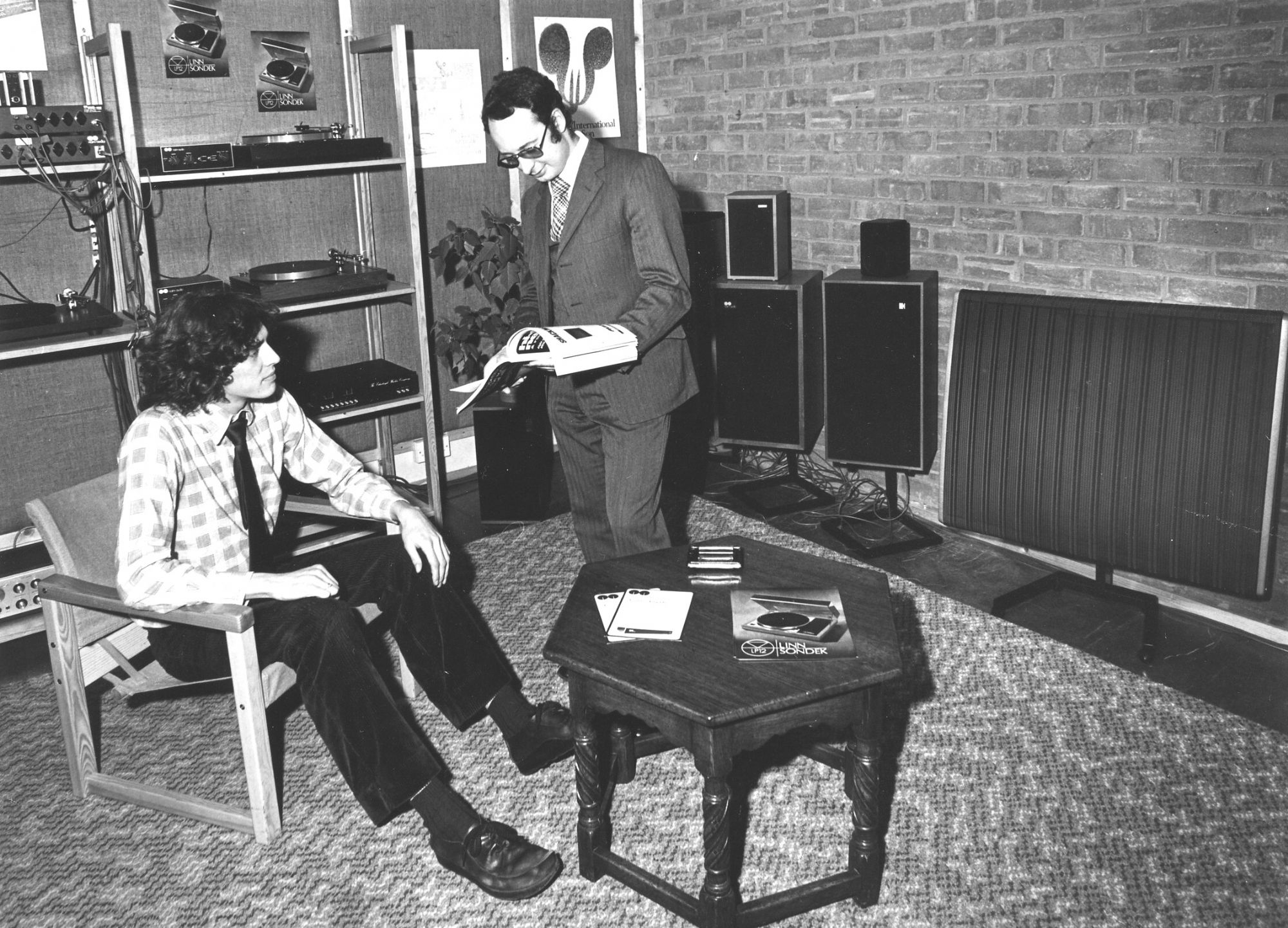
Inside the Edinburgh shop
Following a weekend mountaineering with Chris Bonnington (Russ's other passion is climbing), Russ had a serious car accident that left him with shoulder and head injuries. It was this incident that precipitated another change in direction: to leave retailing and become a freelance Research and Development (R&D) consultant. Work for Nytech and then QED followed, including his first research into cables when he worked with a German cable manufacturer to develop QED's Incon cables.
A misunderstanding during a conversation with Michael Lewin (of Grahams Hi-Fi) led to Russ's discovery of cable directionality. His curiosity also led him to discover that improving the contacts on standard mains blocks brought clearly audible improvements in sound quality.
He also started working for ARC developing loudspeakers, a relationship that lasted until the mid-eighties. Russ was involved in the ARC 101 then 102, 103, 050 and is particularly proud of his work on ARC 801 where he and Alistair Clarke (formerly of Mordant Short) designed and made the drive units themselves.
In the early eighties, Russ was involved in developing QED products including amplifiers, tuners, turntables, cartridges and loudspeakers. He also spent many months travelling around the USA trying to set-up distribution for ARC and Nytech through a network of dealers. The attempt was unsuccessful partly because American customers favoured USA products over European ones, but also due to the fact that whilst selling direct from manufacturers to retailers was commonplace in the UK it was not how things were done in America!
Through the early 80s, Russ continued his R&D work for Nytech including work on their range of integrated amps ad tuners (CTA252, CTP102, CPA602, CXA252 etc). He also worked with Meridian and developed their range of amplifiers (the 101 preamp, the 103 and 105 power amps) and their M2 and M3 loudspeakers.
A Super idea
Whilst travelling in the States, Russ had come across a spike filter. Recognising the value of filtering out spikes and surges, he commissioned the company to make a version that could be used at UK voltages but all the prototypes blew up! By happy coincidence a friend, Richard McGinnis (an engineer at NASA), told Russ about a suppression device they were using in Aerospace. Russ bought parts from the manufacturer and built them into a filter, which was launched in 1983 as Clamp 1 (later to become the SuperClamp).
RATA starter
When Ivor asked Russ to take over import and distribution of Grace and Supex tone arm cartridges he agreed and commenced trading as Russ Andrews Turntable Accessories (RATA). Working with Goldring, he started work on his own range of moving coil and moving magnet cartridges.
Throughout this period, Russ was searching for and finding more and more high quality components that were later to become the foundations of the 'Audiophile Catalogue'. Amongst other products he sold Sidereal capacitors which used Kimber wire; Kimber went on to take over Sidereal in the late 80s and re-launched them as Kimber Kaps.
The Torlyte years
The award-winning and well-reviewed RATA RP range of cartridges were launched in 1984 as was Russ's range of equipment furniture, Torlyte. Russ had been looking for a stiff, low mass material incorporating wood and had spoken to a local cabinet maker, Tony Mulvaney. Tony suggested that a torsion box might be the answer, he made one and together they worked on developing the original Torlyte designs. Torlyte was initially only available in a black finish and was sold through QED as well as direct to customers. By 1986 Russ had bought out Tony's involvement and taken production inhouse.
The KIMBER KABLE connection
In 1985, Russ met Ray Kimber whilst attending the CES in Chicago and recognised the unique innovations Ray was making in cable construction and manufacture. He continues to this day to be convinced by Ray's coherent, honest design philosophy and the resulting superiority of Kimber cables. Less than a year later, Russ had taken on the UK distributorship for Kimber Kable.
Already very aware of the detrimental impact on a Hi-Fi system of poor mains quality, Russ experimented with making mains cables by threading earth wire through the centre of Kimber 4TC and 8TC speaker cable. This was so successful at improving sound quality that he started selling them - they were first specialist mains cables on the market. Ray took the idea on and developed the PowerKords, which were launched in 1987. Aware of Kimber's internal wiring cable, Russ suggested that they use it to make an interconnect - and the PBJ was born (originally called PSB and now superseded by Timbre).
The Olson commission
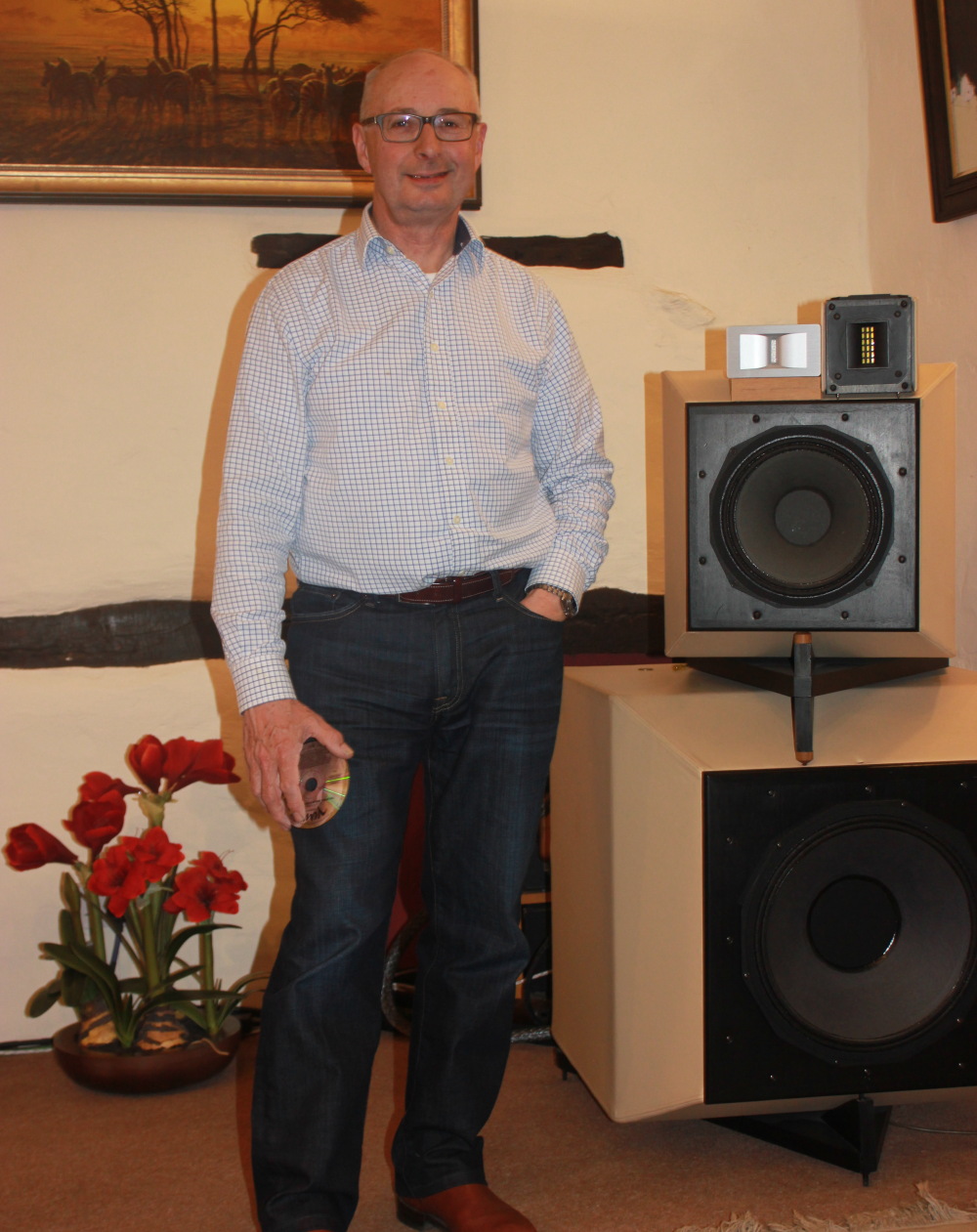
Russ with his Olsen II loudspeaker
At the end of the 80's, Russ was given the opportunity to put into practice all that he had learnt when his friend (and investor) Chris Bonar commissioned him to build a 'cost no object' system. There followed an intense period of R&D, and the fruits of his labour - the Olson II 3 way system - were unveiled to critical acclaim at the 1991 Penta Hi-Fi Show in London. Naturally, Russ went on to develop a range of Hi-Fi equipment derived from the Olson system including CD players, preamps, phono stages and loudspeakers. He also produced a range of DIY upgrade kits giving step-by-step instructions on how to upgrade the components in a selection of branded Hi-Fi equipment.
A mail order company
Finally, Russ brought together all the high quality components, cables, RATA equipment range and upgrade kits together (along with volumes of technical knowledge) in the Russ Andrews Audiophile Catalogue. A densely packed tome that proved popular with customers, and that was the fore-runner of the existing catalogues and information booklets.
As the company grew it expanded out from this hard-core of DIY enthusiasts and changed its catalogue to appeal to a less technical audience. Colour and pictures were added and the focus of product information moved away from technical explanation towards explaining the benefits. In the new era of digital, and bearing in mind the expanded product range, it was decided to drop 'Turntable' from the company name. Not long after, the decision was taken to stop selling to retailers and instead become exclusively mail order direct to customers.
Expanding the company
To aid communication with customers, catalogue production was increased to two issues a year, the Directions magazine was launched, work started on Russ's range of information booklets, and a website providing information and a catalogue request feature was launched.
In order to cope with the increase in business, more sales and manufacturing staff were taken on and the business moved from Russ's house to the village of Staveley. Following the addition of a factory shop to the front of the building, the new offices were officially opened by Tim Collins MP in April 2000.
Meanwhile, Russ continued to work away in R&D focussing primarily on ways to improve mains quality. By 2000 he had launched the PowerBlocks, Silencers and Purifiers that remain the core of the current range. His interest in sound recording was reawakened when he was approached by Embrace to provide cabling for their recording of 'Drawn from Memory'.
In 2001, to celebrate the Company's 15th Anniversary, Russ launched yet more products: the Silver PowerKords, the Crystal range of interconnects and the Russ Andrews SCART cables. The icing on the birthday cake, however, came in November when the Company received not one but two awards at the mail order ECMOD conference! Having won the 'Best Consumer Catalogue' Award for their turnover category, they successfully beat off strong competition (from the likes of Laura Ashley, RS Components, Scotts of Stow and The White Company) to win the prestigious 'Best Overall Consumer Catalogue' Award.
Going Pro
Having been approached to re-wire the Astoria recording studio (owned by David Gilmour of Pink Floyd fame), Russ personally supervised the work (see Russ working at the Astoria here) and then began developing a range of Pro Audio cables which were launched in 2002.
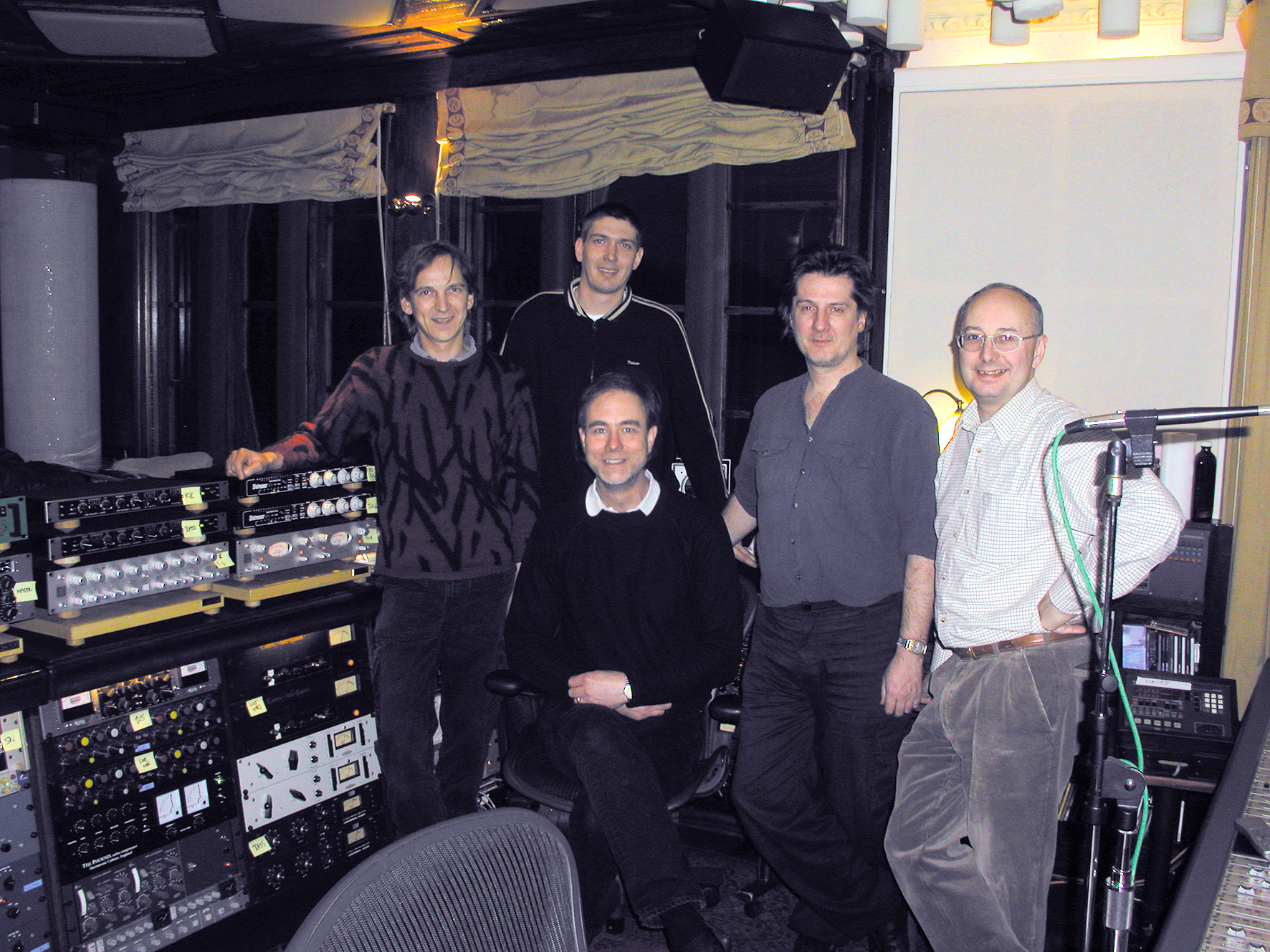
Russ at the Astoria recording studio
Other work in the Pro Audio field has followed including wiring up Russell Watson's home studio, and supplying cables to Michael Zimmerling (recording engineer for Simply Red) and recording engineer/producer Ken Nelson (Gomez, Coldplay).
On another front, Russ started work with SJ Audio to produce an upgraded Russ Andrews Signature version of their attractive pre and power amplifiers. To go with the amplifiers he also designed a new quarter wave loudspeaker, Quave, manufactured by Castle. The system was launched at the Hi-Fi News Show in London, September 2002, and was praised by many as producing "the best sound at the Show".
Web assisted
June 2003 saw Russ Andrews launch their new fully transactional website which quickly proved a hit with customers. An existing repuation for innovation and design in our own field does not necessarily transfer to others, but in this case we also found ourselves as trailblasters in the direct commerce industry, winning a number of national awards for our website and catalogue design at the national ECMOD Awards in London.
The website has grown from strength to strength over the intervening years, as has the number and variety of products we offer. But one thing has remained consistantly at the forefront of our business, and that's customer service. Offering unparalleled help and advice to our customers - regardeless of whether or not they are looking to make a purchase - has always been core to the Russ Andrews philosophy.
So don't forget, if you need help or have a question about your setup, please do get in touch and we'll try our very best to come up with a solution.
You can either phone us on 01539 797300 or email us at info@russandrews.com
More about Russ's time before Russ Andrews Accessories
View the Russ Andrews Timeline.


















